Understanding LearnDash Notifications for E-Learning
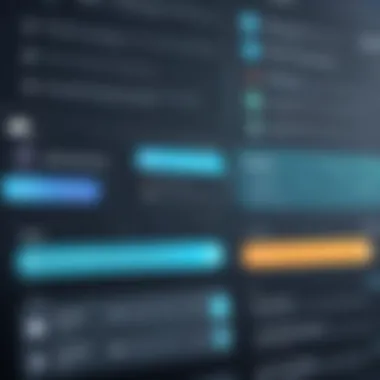
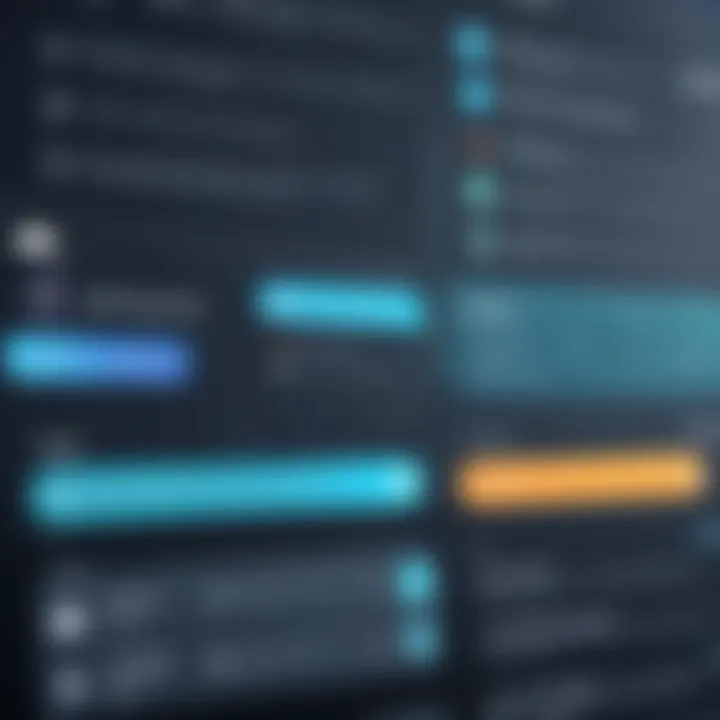
Intro
In the modern landscape of e-learning, notifications play a pivotal role in fostering communication between instructors and learners. With platforms like LearnDash, the significance of notifications extends beyond mere alerts. They serve as a tool to enhance the learning experience, ensuring vital information is delivered timely and effectively. This article sheds light on the multifaceted nature of LearnDash notifications, encompassing their types, customization options, integration capabilities, and best practices for integration.
Key Features and Functionalities
Comprehensive Overview
LearnDash notifications are not just simple alerts; they represent a dynamic communication tool tailored for an engaging e-learning experience. These notifications can take various forms, from course completion alerts to reminders about upcoming lessons. Here’s a breakdown of the key features:
- Course Completion Alerts: Notifications informing learners when they complete a module or course.
- Assignment Deadlines: Reminders for due dates that help maintain student accountability.
- Progress Tracking: Updates that keep learners aware of their advancement through the material.
- Custom Messages: The ability to craft messages that align with the course’s theme or the instructor's intent.
These features not only keep learners in the loop but also encourage them to stay engaged. When students receive timely updates, they are more likely to tackle their coursework proactively.
Target Users
Understanding who benefits from LearnDash notifications is crucial. Primarily, these notifications cater to:
- Educators who wish to maintain communication with their students, ensuring they are informed and engaged.
- Learners who need reminders and updates to help them navigate their educational journey.
- Institutional Administrators, who rely on notifications to enhance overall engagement and satisfaction among users.
Notifications aren’t merely an add-on; they are integral to the success of educators and learners alike.
"Effective notifications can bridge the gap between content delivery and student engagement."
Pricing Models and Cost Analysis
Breakdown of Pricing Tiers
LearnDash offers a spectrum of pricing models, accommodating various types of users. Typically, pricing is tiered based on the features available:
- Basic Plan: Access to core features, suitable for individual educators just starting out.
- Plus Plan: Includes more extensive tools, ideal for small to medium educational bodies.
- Pro Plan: Encompasses all features, providing robust support for larger institutions and advanced functionalities.
Each tier presents a different set of capabilities, which can ultimately affect how notifications are utilized.
Additional Costs to Consider
Aside from base pricing, it’s essential to factor in additional costs that may surface:
- Add-ons: Depending on the level of customization desired, certain premium plugins may incur extra fees.
- Integration Services: Collaborating with third-party tools or APIs may involve consultancy fees, if not handled in-house.
- Maintenance: Regular upkeep and updates can also represent a recurring expense that organizations should budget for.
Understanding these financial elements helps decision-makers strategize their investment in LearnDash notifications more effectively, ensuring they derive maximum value from the platform.
Understanding LearnDash Notifications
In the realm of online education, notifications serve as a critical bridge between the learner and the content. Understanding how LearnDash notifications operate is essential for anyone involved in creating e-learning environments. These notifications not only facilitate communication but also play a pivotal role in enhancing learning experiences.
By grasping the intricacies of this feature, educators and administrators can tailor their messaging, ensuring that learners are both informed and engaged. Consider this: a timely reminder about an impending assignment or an alert about course completion can be the difference between a dropout and a successful graduate.
Furthermore, knowing how to effectively utilize notifications can lead to a more structured learning path for participants. It is not just about sending messages; it’s about sending the right messages at the right time.
Definition and Purpose
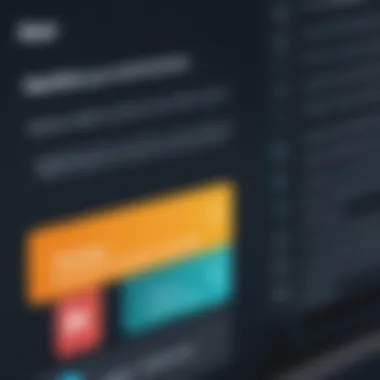
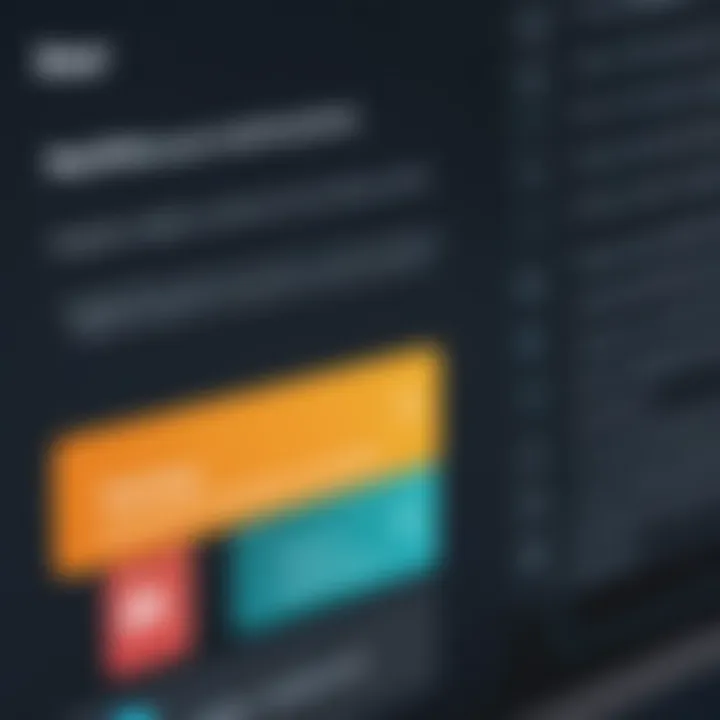
LearnDash notifications refer to automated messages that are triggered by specific user actions or events in an e-learning platform. These alerts can range from course reminders to feedback on assignments. Their primary purpose is to keep learners informed and engaged with their educational journey.
These notifications can take various forms, including but not limited to:
- Email alerts that inform users about new course materials or discussion forum updates.
- In-app notifications, which provide immediate feedback on quiz results or course completion.
In essence, they act as a guiding hand, facilitating a smooth learning experience while ensuring that no critical updates are missed.
Importance in E-Learning Environments
Notifications in e-learning environments are often overlooked, yet their importance cannot be overstated. They serve several crucial functions that enhance both teacher and learner experiences:
- Promoting Engagement: Students are more likely to participate in courses when they receive reminders and alerts. They keep learners in the loop about assignments, events, and other critical updates that can influence their performance.
- Providing Immediate Feedback: Instant notifications about quiz results or assignment grades allow learners to adjust their study habits swiftly. This immediate interaction with their progress can be a real motivator for improvement.
- Facilitating Time Management: Notifications help in segmenting tasks and setting timelines. By receiving alerts about deadlines and important dates, learners can better organize their schedules.
- Encouraging Continual Learning: When students get updates about new modules or additional resources, it encourages ongoing education and exploration of topics that pique their interest.
Ultimately, LearnDash notifications are not just extras; they are integral to crafting a successful online learning experience. By informing, reminding, and engaging, they turn the learning journey into a much more dynamic process.
Types of Notifications in LearnDash
Understanding the types of notifications available in LearnDash is pivotal for anyone looking to enhance their e-learning platforms. Notifications serve as the lifeblood of communication between learners and course creators. They inform and engage, ensuring that learners are aware of their progress and forthcoming responsibilities. By strategically implementing different types of notifications, you can significantly improve user engagement and learning outcomes.
Course Completion Notifications
Course completion notifications are crucial in an e-learning context. When a learner successfully wraps up a course, an immediate notification can boost their sense of achievement. Rather than just showing a 'congratulations' banner on the screen, proactively sending an email or a platform message acknowledging their success can make the experience far more personal.
- They reinforce the reward system for learners, encouraging them to continue.
- Recipients often share their successes on social media, indirectly promoting the course.
- If you integrate these notifications with potential next steps, like recommended courses, you can guide learners down a path of continuous education.
Assignment Feedback Alerts
Learners crave feedback on their submitted assignments. Assignment feedback alerts act as a bridge between anxiety and understanding. When students submit their work, receiving timely notifications about feedback ensures they remain engaged and motivated.
- These alerts can specify whether the feedback is positive, constructive, or requires resubmission.
- When crafted with care, they encourage a two-way dialogue between students and instructors, fostering a healthy learning atmosphere.
- Implementing automatic feedback notifications can also save educators time while providing students with the support they need to improve.
Quiz Results Notifications
Quizzes are often the barometers of a student's understanding in any course. Notifications regarding quiz results offer learners immediate insights into their grasp of the material. Prompt delivery of these results can be the difference between retaining the information and feeling discouraged.
- You can personalize results notifications to reflect the learner's performance—congratulating top scorers while encouraging others to keep trying.
- Integrating these results with targeted recommendations can enhance the learning experience, as students can identify areas needing improvement.
- Using tools like charts and graphs in notifications may further clarify performance, providing visual aid that supports comprehension.
Reminders and Alerts
Life gets busy, and learners can easily lose track of assignment due dates or upcoming quizzes. Reminders and alerts ensure that they stay on track with their coursework. LearnDash allows for the customization of these reminders, so you can fine-tune the timing and content to best serve your learners.
- Reminders can be set a day, a week, or even hours before deadlines, adapting to various learner preferences.
- You might incorporate customized motivational quotes or tips on effective study methods to make these notifications feel more engaging.
- Frequent reminders, when used judiciously, can help in maintaining motivation without overwhelming learners.
Customizing LearnDash Notifications
Customizing notifications in LearnDash is essential because it allows educators and administrators to tailor the learning experience to fit the specific needs and preferences of their audience. Not every learner responds the same way to generic messages; customizing notifications ensures that communications are relevant and engage users effectively. When notifications resonate with users, they are more likely to take action – whether that be completing a course, submitting an assignment, or revisiting educational material. The right notification at the right moment can make all the difference, thus improving learning outcomes.
Using Built-in Tools
LearnDash comes equipped with several built-in tools for customizing notifications. A fundamental feature includes easily adjustable settings in the LearnDash dashboard, allowing users to make changes without any coding knowledge or technical expertise. You can modify message contents, set triggers based on user behavior, and choose how and when notifications will be sent.
For example, instructors may want to set automated notifications for course updates, directing them specifically to students who are enrolled in the course. This scenario ensures that no one misses critical information about exams or resource availability.


To utilize these built-in tools effectively, consider the following points:
- User Segmentation: Grouping learners based on progress or engagement levels can optimize notification efficiency.
- Timing Options: Selecting the right moment for notifications is crucial. For instance, a reminder a few hours before an assignment deadline can prompt timely submission.
- Content Variability: Varying the content of the notifications can help combat fatigue. Using different messages for similar events can keep communication fresh and engaging.
These customizable built-in tools pave a path for meaningful interactions between learners and instructors.
Leveraging Add-ons for Enhanced Functionality
For those looking to further elevate their notification game, leveraging add-ons offers a wealth of advanced functionality that can be indispensable. Numerous third-party plugins exist that specifically enhance notification features within LearnDash. For instance, integrating tools like Uncanny Automator or AutomatorWP can expand your notification capabilities significantly.
With these add-ons, one can:
- Create Conditional Notifications: These enable complex triggers based on specific actions taken within the course. For example, if a learner scores below a certain mark on a quiz, a notification could be sent suggesting a review of the material.
- Multi-Channel Outreach: Some add-ons can integrate notifications across different platforms, enabling outreach through email, SMS, or social media. This ensures that important information reaches learners where they are most active.
- Analytics and Insights: Enhanced reporting features allow you to analyze the performance of your notifications, providing insights into delivery rates, open rates, and user interactions. Such data facilitates informed decision-making regarding future notifications.
As we approach a more technology-driven e-learning era, customizing LearnDash notifications via built-in tools and add-ons not only tailors the learning experience but also solidifies the importance of effective communication strategies in education.
Integrating Notifications with Other Platforms
Integrating notifications with other platforms is a cornerstone of effective communications in the e-learning space. The significance of this integration lies in ensuring that users receive updates through their preferred channels, enhancing engagement and retention rates. When notifications are interwoven into various platforms, learners can stay informed, feel more connected, and are less likely to miss critical information. This seamless connectivity ultimately promotes a more holistic learning experience.
Email Integration Strategies
Email continues to be a powerful tool for reaching users effectively. When considering email integration strategies, it’s vital to focus on the following:
- Personalization: Tailoring messages to an individual's progress or preferences can dramatically increase open rates. For example, instead of generic course reminders, sending a personalized note saying, "Hi [Name], we noticed you haven’t completed Module 3 yet. Need help?" can foster a deeper connection.
- Segmentation: Grouping learners based on criteria such as completion status, activity level, or interests allows for targeted communication. As an example, sending specific updates to students who are trailing can be more effective than a blanket approach.
- Timing: It’s not just what you say, but when you say it. Sending emails at optimal times, such as right after a quiz or course completion, can engage users when they are most contextually relevant.
- Automation: Utilizing tools like Zapier or Integromat can automate the process. Setting up triggers that send notifications based on specific actions (like completing a lesson) can save time while ensuring no one is left in the dark.
Integrating email communication also opens doors to tracking user interactions. Monitoring open rates and engagement can provide valuable insights.
Third-Party SMS Notifications
Amidst the various communication channels, SMS notifications present a unique advantage: immediacy. Many learners frequently check SMS, making it a reliable method for delivering crucial updates. Here are some elements to consider about incorporating SMS notifications:
- Instant Deliverability: Unlike emails which can go unread or be lost in clutter, SMS messages usually deliver instantly. An alert about a looming deadline sent via text could mean the difference between submission or missed opportunity.
- Brevity is Key: Given the character constraint of SMS messages, the communication has to be succinct. Crafting concise yet powerful notifications can provide the necessary prompt without overwhelming the user.
- Engagement Tracking: One can track responses to SMS notifications. For instance, if a user replies to a message about an upcoming quiz, it’s evident that they are engaged and interested. This data can inform future communications as well.
"Using SMS confirms users received vital information, increasing the likelihood of their participation. Better informed learners mean better outcomes."
- Combining with Other Platforms: SMS can complement email notifications. For instance, you can send an SMS as a reminder for an email containing more detailed information. This layered approach ensures users have multiple cues.
If you’re considering using SMS for notifications, ensure you comply with regulations like GDPR, which protect user data and privacy. This builds trust and keeps the relationship professional.
In summary, integrating notifications with platforms like email and SMS is not simply a nice-to-have; it's a must-do for any e-learning provider. By doing so, you are catering to your users' needs, thus improving their experience and ultimately driving better learning outcomes.
Best Practices for Implementing Notifications
Implementing effective notifications in LearnDash can be a game changer when it comes to learner engagement and course completion rates. Ensuring that notifications are timely, pertinent, and personalized can fortify the educational experience. Here, we explore several important best practices that can refine how notifications operate, helping educators and administrators cultivate an enriching learning environment.
Timing and Frequency of Notifications
Finding the sweet spot for timing and frequency is essential in notification strategy. If notifications come too frequently, learners may experience notification fatigue, leading them to overlook important messages. Conversely, if they are sent too sparingly, learners might miss out on crucial updates and reminders.
A balanced approach could look like this:
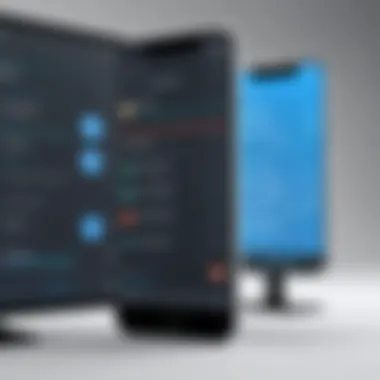
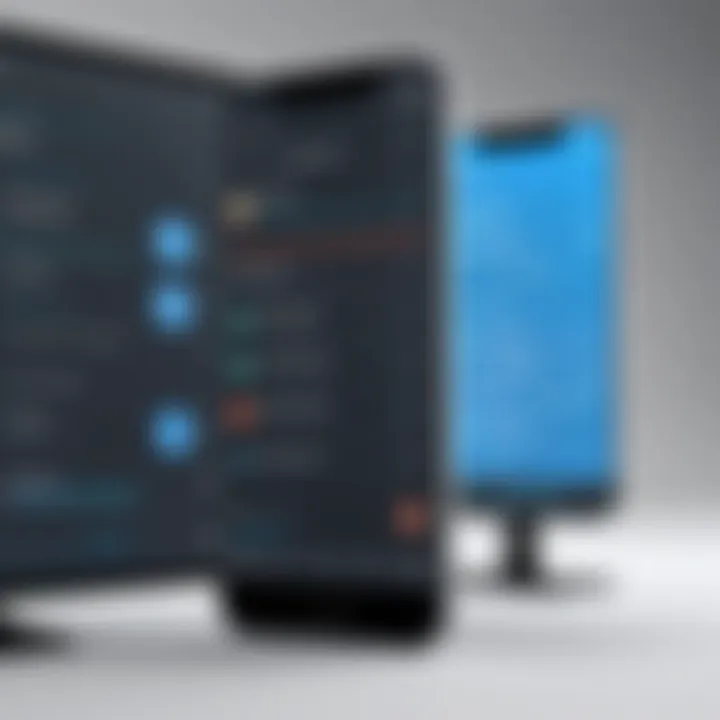
- Course-specific timing: For example, sending reminders about assignments or quizzes a day beforehand can give learners enough time to prepare.
- Utilize notifications for celebrations: Acknowledge learners who complete a course or achieve a significant milestone right away. It can create a positive reinforcement cycle.
- Segment your audience: Tailoring notifications based on the learner’s behavior can increase relevance and engagement.
"In education, timing is everything. A well-timed notification can motivate a learner, while a badly timed one might just go to waste."
Personalization Techniques
Personalization is more than just addressing a learner by name; it’s about crafting messages and notifications that resonate with the individual. Here are some effective methods:
- Leverage data: Use data analytics to understand a learner’s progress and interest. For instance, if someone struggles with quizzes, consider sending personalized study tips or resources related to that specific topic.
- Tailored messages: Customize notifications based not just on course enrollment but also on past interactions. For example, “Hi Jamie, noticed you missed the last quiz! Don’t worry, here’s an extra resource to help you out.” This may encourage students to engage with the content more readily.
- Timing based on learner activity: If a learner is frequently logging in during evenings, schedule notifications for those times when they are most active.
A/B Testing Notification Strategies
A/B testing can serve as a crucial tool in determining which notification strategies yield the best results. By segmenting your audience into two groups, you can test different notification formats, wording, or times of delivery. Here’s how to execute this:
- Choose your variable: This could be the subject line of an email, the timing of a push notification, or even different formats of messages (e.g., text vs. visuals).
- Set clear goals: What are you aiming to achieve? Increased open rates? Higher engagement?
- Analyze the data: After your testing period, take a step back and look at the results. Which notifications performed better?
- Implement findings: Use what you learn to refine future notifications.
This iterative process helps inform decisions with data-backed insights, ultimately refining the learner's experience.
By embedding these best practices into your notification strategy, you create a more effective communication channel that can significantly enhance learner engagement and the overall effectiveness of e-learning within the LearnDash framework.
Analyzing Notification Effectiveness
In the fast-evolving realm of e-learning, where platforms like LearnDash are pivotal for delivering quality content, analyzing the effectiveness of notifications becomes vital. Notifications serve not merely as reminders; they are critical touchpoints that foster user engagement, retention, and overall satisfaction. Understanding how these notifications are performing can lead to more tailored approaches, ensuring that learners stay connected and motivated throughout their educational journeys. In essence, the performance indicators tied to notifications can illuminate pathways for enhancement, guiding institutions toward superior learning outcomes.
Key Performance Indicators to Monitor
When digging into the effectiveness of notifications, certain Key Performance Indicators (KPIs) should always be in the spotlight. Here are some essential metrics:
- Open Rates: This measures the percentage of notifications opened by the users. High open rates indicate that your messages are relevant and appealing.
- Click-Through Rates (CTR): Once opened, how many users actually engage with the content? This metric tells you if the notification's call-to-action hits home.
- Response Rates: For notifications that solicit immediate feedback or actions, tracking how many learners respond is crucial. A low response rate might suggest that the message was unclear or poorly timed.
- Retention Rates: Over time, did learners become more engaged after receiving certain types of notifications? Analyzing this can provide insight into what resonates with the audience.
- Feedback Quality: Are learners responding positively or negatively? Gathering qualitative data through feedback can shed light on user sentiment towards the notification processes.
These KPIs not only help in assessing the current notification strategy, but they also pave the way for strategic adjustments. Monitoring these indicators in a consistent manner helps organizations adapt dynamically to the needs of their users.
Methods for Gathering User Feedback
To harness the full potential of notifications, organizations should seek to gather user feedback proactively. There are several effective methods for doing this:
- Surveys and Polls: Deploy surveys immediately after notifications are received. This could include simple questions about clarity and relevance. Keeping these short can encourage participation.
- Focus Groups: Bringing small groups together to discuss their experiences with notifications allows for deeper insights. Here, learners can express what information they found helpful or confusing.
- Feedback Forms: Embedding feedback forms directly within notification messages allows users to provide immediate input. This seamless integration can lead to higher response rates.
- A/B Testing: Testing different notification styles and gauging which one garners better engagement can reveal clear preferences within your audience.
- Usage Analytics: Leveraging tools that analyze user behavior in response to notifications can also provide indirect measures of effectiveness.
By employing these methods, it becomes possible to engage learners in a conversation about their needs and expectations. An organization that listens is one that adapts and flourishes, creating a more enriching environment for all learners.
Future Trends in E-Learning Notifications
As we look to the horizon of e-learning, it’s clear that the landscape is constantly evolving. This section aims to illuminate the future trends of notifications within platforms like LearnDash that are shaping a more interactive and responsive learning experience. The importance of these trends cannot be overstated, as they serve as vital tools in addressing learners’ needs, enhancing engagement, and ultimately improving educational outcomes. Here, I will dive into how automation and AI are redefining notification systems, and explore the burgeoning role of data analytics.
Automation and AI in Notifications
The integration of automation and AI technologies in notifications marks a significant shift towards more intelligent and personalized learner communication. Automation allows for timely delivery of notifications based on specific triggers, such as enrollment in a new course or completion of assignments. This can help maintain engagement without overwhelming learners. With AI, systems can analyze individual user behavior to tailor notification content, ensuring it is relevant and engaging for each learner.
- Predictive Notifications: For instance, an AI system could analyze a learner's past performance and habits to send reminders about upcoming quizzes or suggest study materials before the learner even realizes they need them.
- Contextual Awareness: An AI-driven approach can also help in understanding when a learner is most receptive to notifications, timing them perfectly to enhance the likelihood of engagement.
- Feedback Loops: As learners interact with notifications, the AI can refine its approach, learning from what works and what doesn't, thus improving future communications.
This shift isn't just about convenience; it enhances the learning journey. By delivering the right messages at the right time, institutions can help keep learners on track and motivated.
The Role of Data Analytics
Data analytics is becoming central to the strategy of e-learning notifications. As educational institutions' reliance on data increases, the role of analytics in understanding learner behavior cannot be overlooked. By analyzing trends and patterns, organizations can make informed decisions to shape their notification strategies.
- Monitoring Engagement Metrics: Tools can evaluate open rates of email notifications, click-through rates on learning materials, or responses to alerts. Such metrics allow organizations to identify which types of notifications resonate most effectively with their audience.
- Segmentation of Target Groups: Data also enables institutions to segment learners based on characteristics such as age, course engagement levels, or performance. This means notifications can be more targeted - for example, sending support resources specifically to those struggling with certain course content.
- Iterative Improvement: Ongoing analysis of data doesn't just help in real-time adjustments; it allows for long-term optimization of notification strategies based on historical data.
With the appropriate use of data analytics, organizations can transform notifications from basic alerts into strategic tools that significantly enhance learner outcomes.















